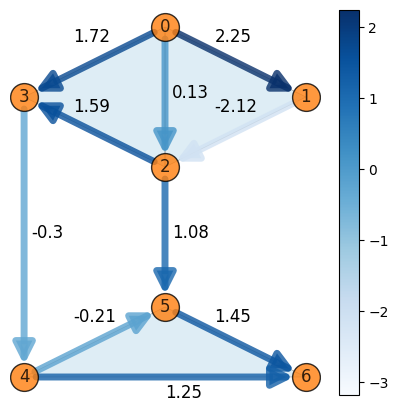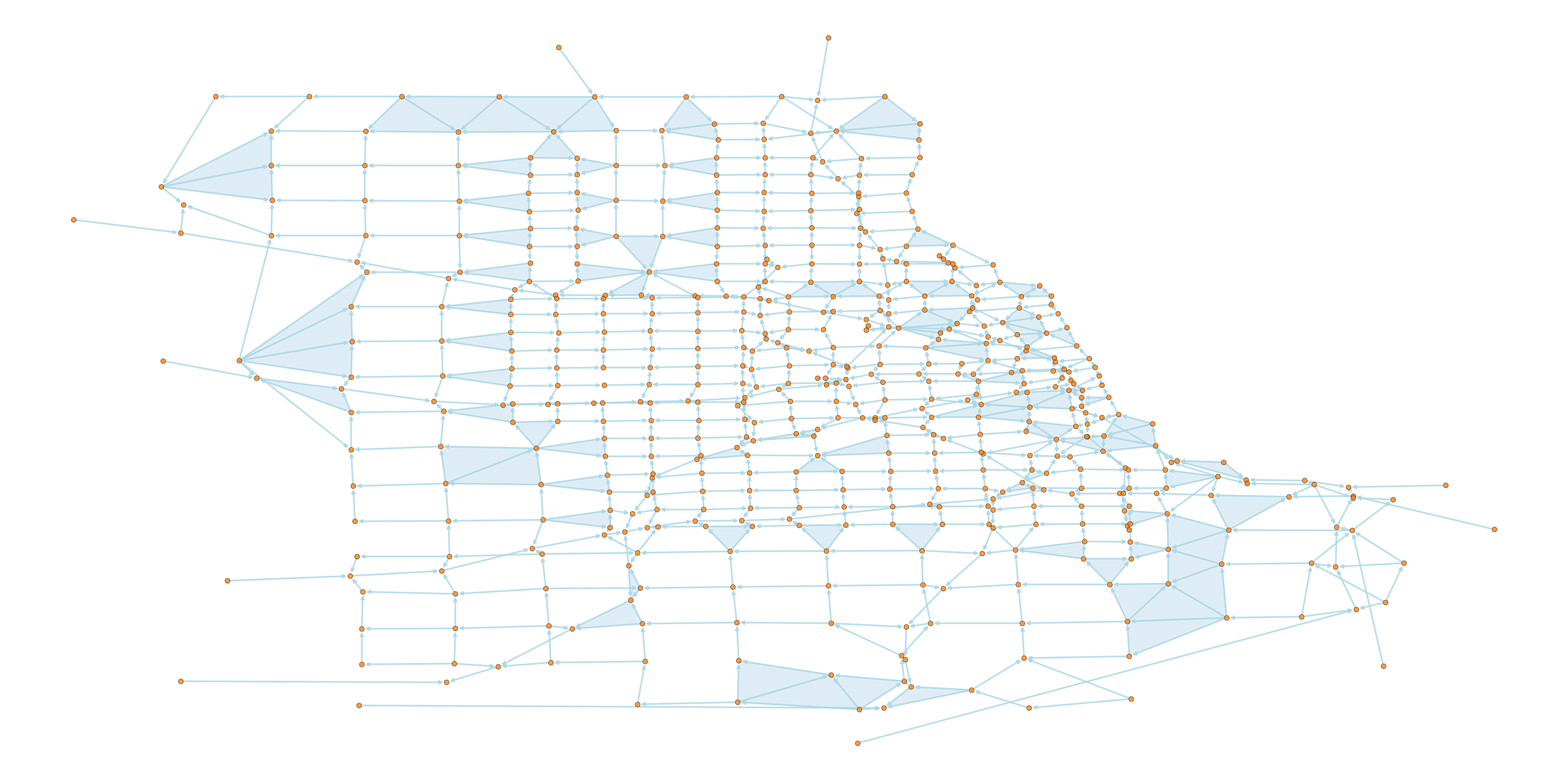


The PyTSPL python package is a library for Topological Signal Processing and Learning. It is a
free software distributed under the MIT license and available on PyPI. The documentation is available
on Read the Docs and development takes place on
GitHub.
The primary goal of PyTSPL is to provide a unified and comprehensive toolset for the analysis and
visualization of higher-order interactions, currently centered towards simplicial complexes (SCs). The
functionalities of SCs are scattered and it’s difficult to use multiple functionalities together. By
integrating multiple functionalities within a single library and extending them, PyTSPL aims to facilitate
research and practical applications in various domains.
Currently, the PyTSPL facilitates the functionalities for SCs but the aim is to
extend the library for additional topological learning functionalities.
Simplicial complexes (SC):
io: Responsible for reading raw datasets and preprocessing them such that they can be passed on to the next module to build an SC. The raw datasets can be read using the network_reader submodule. The data can be in various formats such as CSV, TNTP or plain incidence matrices B1 and B2. There is additional functionality to read the coordinates and edge flow of the SC as well. Additionally, there is functionality to load built-in datasets using the dataset_loader submodule. Finally, there is also a quick way to generate a random SC using the sc_generator submodule.simplicial_complex: Once the raw data is read using the io module, it is stored in the simplicial_complex data structure. This data structure allows us to compute the algebraic properties of the SC. This includes computing the incidence matrix, adjacency matrix, Laplacian matrices and many others. It also allows for the computation of k-step lower and upper shifting and simplicial embeddings of the SC.plot: Offers the functionality to plot an SC in a quick and meaningful way. The user can draw the entire network or draw nodes, edges, and their respective labels in a custom way that meets their needs. The plots are drawn using the provided network coordinates. If the coordinates are not provided or don’t exist, the module automatically generates coordinates using NetworkX’s spring_layout.decomposition: Offers functionality to decompose signals using eigendecomposition and Hodge decomposition. The eigendecomposition functionality allows users to extract the gradient, harmonic, and curl eigenpairs, whereas the Hodge decomposition allows users to obtain the divergence, curl, total variance of the SC. The gradient, harmonic, and curl flow can also be calculated.filters: This module aims to provide simplicial convolutional filters for the SC, namely, Least-Squares filter, Grid-Based filter, and Chebyshev filter design. The applications for these filters include subcomponent extraction and edge flow denoising. Additionally, the module offers functionality for simplicial trend filtering for reconstructing simplicial signals from (partial) noisy observations.hodge_gp: Hodge-Compositional Edge Gaussian Process is used to model functions defined over the edge set of an SC. This method aims to learn flow-type data on networks where edge flows can be characterized by discrete divergence and curl. This module is built onPyTorchand allows users to directly train their model and make predictions on real-world datasets.
The following demonstrates how to list available datasets and instantiate a SC using a built-in dataset:
>>> from pytspl import list_datasets, load_dataset
>>> print(list_datasets()) # print available datasets
>>> sc, coordinates, flow = load_dataset("paper")
Num. of nodes: 7
Num. of edges: 10
Num. of triangles: 3
Shape: (7, 10, 3)
Max Dimension: 2
Coordinates: 7
Flow: 10Let's go ahead and plot the SC using the coordinates:
>>> from pytspl import SCPlot
>>> import matplotlib.pyplot as plt
>>>
>>> scplot = SCPlot(simplicial_complex=sc, coordinates=coordinates)
>>>
>>> fig, ax = plt.subplots(figsize=(4, 5))
>>> scplot.draw_network(ax=ax)We can also plot the edge flow of the SC using:
>>> fig, ax = plt.subplots(figsize=(5, 5))
>>> scplot.draw_network(edge_flow=flow, ax=ax)Let's go ahead and load a larger dataset and plot it:
>>> sc, coordinates, flow = load_dataset("chicago-sketch")
>>> scplot = SCPlot(simplicial_complex=sc, coordinates=coordinates)
>>> fig, ax = fig, ax = plt.subplots(figsize=(80, 40))
>>> scplot.draw_network(with_labels=False, node_size=200, arrowsize=20, ax=ax)Before installing the PyTSPL, create a virtual environment and activate it.
python3 -m venv pytspl-env
source pytspl-env/bin/activateThe PyTSPL is available on PyPI can be installed using pip:
pip install pytsplNote that you will need a recent version of Python (>=3.11).
To run the library, you will need to install the following dependencies separately due to the fact that PyPI does not allow for the installation of packages from git repositories:
python3 -m pip install 'git+https://github.com/chebpy/chebpy'
python3 -m pip install 'git+https://github.com/pyt-team/TopoNetX'
python3 -m pip install 'git+https://github.com/pyt-team/TopoModelX'See the guidelines for contributing in CONTRIBUTING.rst.
PyTSPL was started in 2024 as an academic open-source project for research purposes by students
at Delft University of Technology. This project is still in project and will be updated with
additional functionalities in the future.
If you are using the library, please consider citing the theoretical papers it is based on.
@article{yang2022simplicial,
title={Simplicial convolutional filters},
author={Yang, Maosheng and Isufi, Elvin and Schaub, Michael T and Leus, Geert},
journal={IEEE Transactions on Signal Processing},
volume={70},
pages={4633--4648},
year={2022},
publisher={IEEE}
}
@article{yang2023convolutional,
title={Convolutional learning on simplicial complexes},
author={Yang, Maosheng and Isufi, Elvin},
journal={arXiv preprint arXiv:2301.11163},
year={2023}
}
@InProceedings{pmlr-v238-yang24e,
title={Hodge-Compositional Edge Gaussian Processes},
author={Yang, Maosheng and Borovitskiy, Viacheslav and Isufi, Elvin},
booktitle={Proceedings of The 27th International Conference on Artificial Intelligence and Statistics},
pages={3754--3762},
year={2024},
volume={238},
series={Proceedings of Machine Learning Research},
month={02--04 May},
publisher={PMLR},
}The filters module of the library is based on this initial Matlab code
and the hodge_gp module is based on this Python repository.





